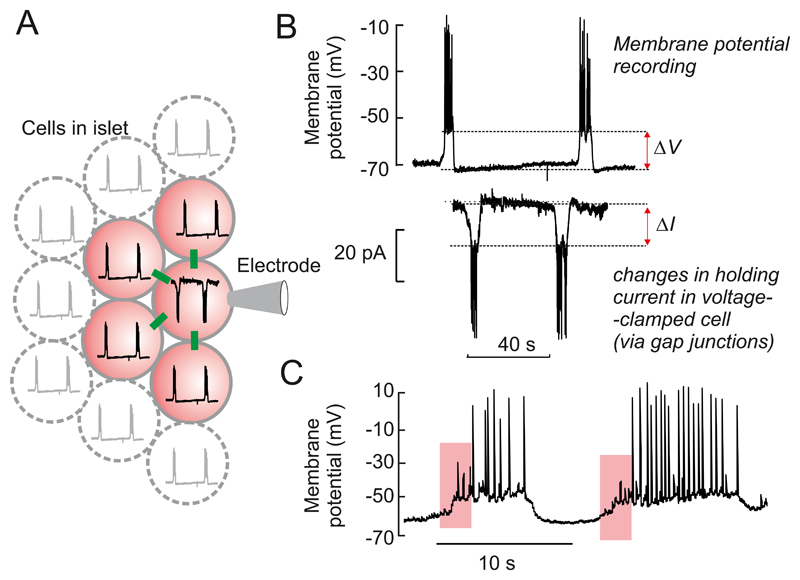Figure 11.
A: Schematic of electrical coupling between β-cells in an intact islet. The green rectangles indicate gap junctions. Electrically coupled cells are indicated in pink. One β-cell within the islet is voltage-clamped at -70 mV through the recording electrode, so inhibiting electrical activity. Spontaneous electrical activity in neighboring electrically coupled cells (black traces in pink cells) results in an inward current that resembles an inverted burst of action potentials in the voltage-clamped cell. B: Membrane potential (top) and membrane current (lower) recorded from the same β-cell under current- and voltage-clamp conditions, respectively. Assuming that electrical activity recorded in the β-cell connected to the patch electrode prior to voltage-clamping approximates that of its neighbors, the total gap-junctional conductance (Gj) can be estimated from the equation Gj = ΔI/ΔV where ΔV (above) and ΔI (below) represent the current and voltage differences between the plateau current/potential and the most repolarized voltage/least negative current. C: An example of bursting electrical activity where low-amplitude action potentials (coming from an adjacent β-cell) precede full-amplitude action potentials (red rectangle). These low-amplitude action potentials probably reflect electrical activity in (a) neighboring β-cell(s) that ‘leaks’ into the cell from which the recording is made via gap junctions.

